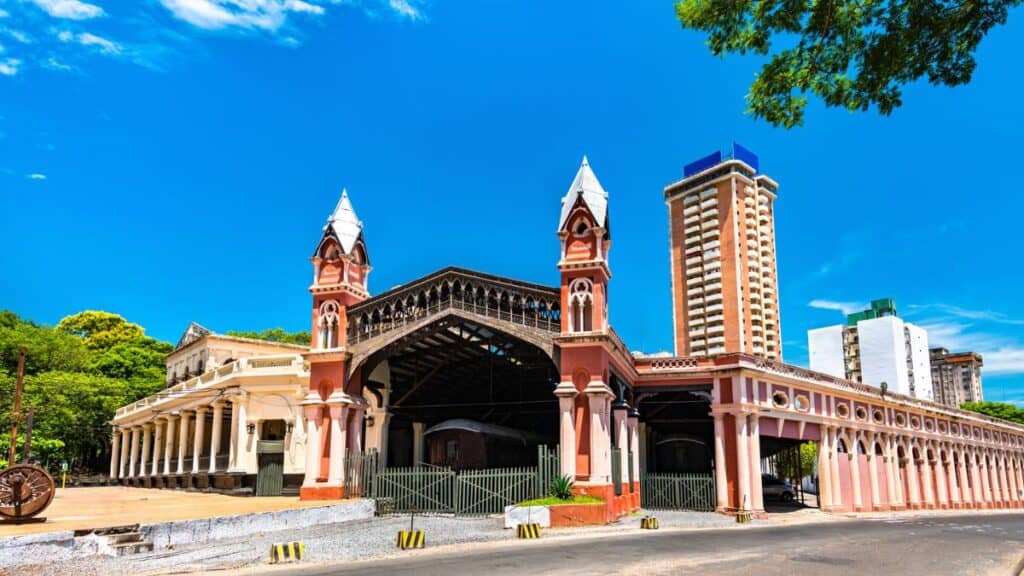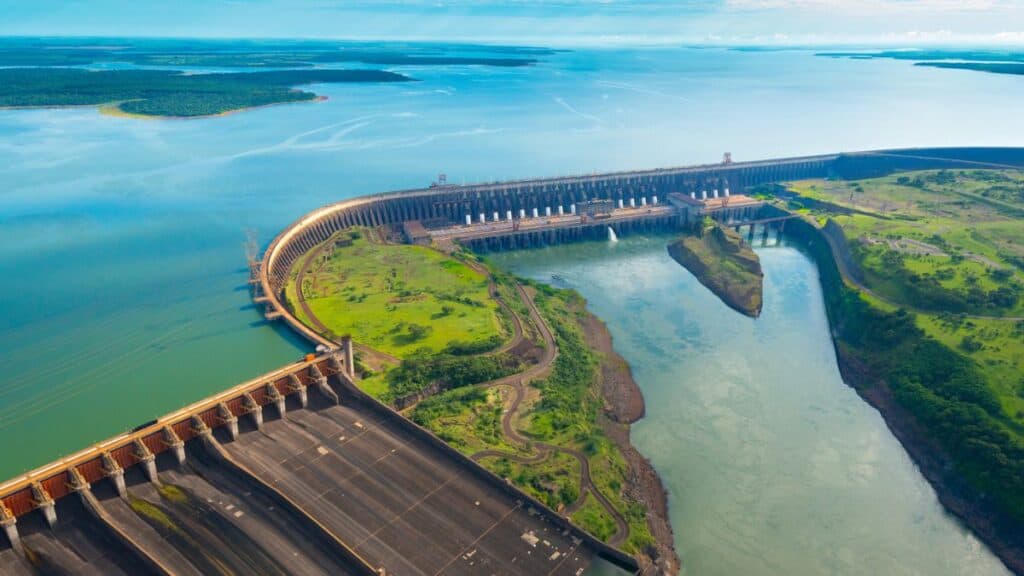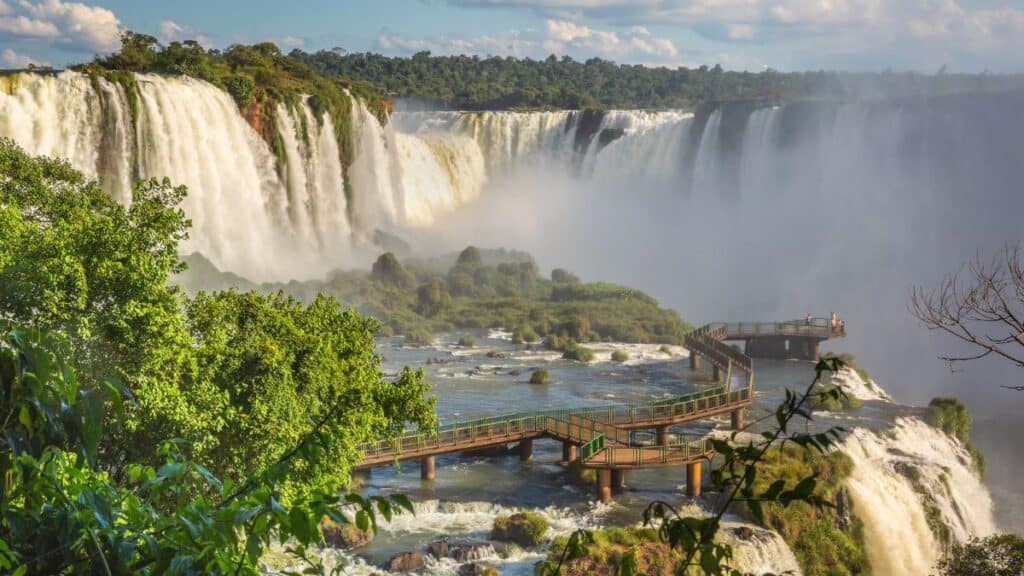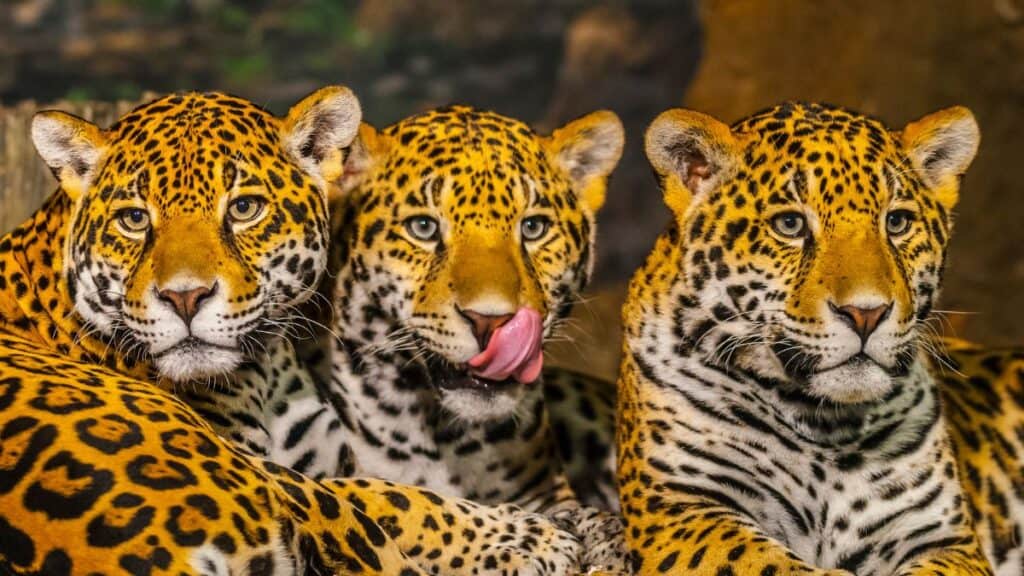Welcome to the captivating world of Paraguay, a country known as the “feather crown of waters.” This article aims to bridge the information gap by presenting 46 of the most interesting facts about Paraguay. There’s much more to explore and discover about this unique land of rivers and culture.
Paraguay, a landlocked country in the heart of South America, boasts a rich tapestry of culture, history, and natural beauty. The country is renowned for its unique blend of indigenous traditions and European influences. The Paraguay capital city, Asunción, is a vibrant hub that reflects this cultural fusion through its colonial architecture, bustling markets, and lively street life.
The name “Paraguay” is derived from the Guarani language, spoken by the region’s indigenous people. In Guarani, “Paraguay” means “water that comes from the sea,” a reference to the country’s numerous rivers, including the Paraguay River, which flows through its heart.
The country is a haven for nature enthusiasts, offering opportunities for eco-tourism and exploration of its national parks and reserves. Paraguay’s commitment to environmental conservation, combined with its warm and welcoming people, makes it a captivating destination that invites visitors to discover the hidden gems within its borders.
Read on to discover more fascinating facts about Paraguay that could compel you to add it to your travel bucket list.
45 Interesting Facts About Paraguay
1. Land and Population
Paraguay covers an area of approximately 157,000 square miles (406,628 square kilometers) and is home to nearly 7 million people.
2. Cultural Significance of Eye Contact
Looking into someone’s eyes when you talk is a way to show respect and trust. It’s considered impolite if you don’t do this during a conversation.
3. Capybara and Unique Rodents
The capybara, the world’s largest rodent, weighing up to 154 pounds (70 kilograms), can be found in Paraguay.
4. Pioneering Railway Station

Paraguay had the first working railway station in South America, built in the 1800s. The railway was built and designed by British engineers. The first train in Paraguay began running in June 1861. It traveled from the main station in Asunción to Trinidad, covering a distance of approximately 4 kilometers.
5. Bordering Countries and Coastal Absence
Paraguay shares its borders with three countries: Argentina, Brazil, and Bolivia, and it is one of the few countries that doesn’t have a coastal area.
6. Naval Training in Argentinian Waters
Although three countries border, Paraguay and the country has no coastal areas, a huge trained naval army still uses the Argentinian waters for training.
7. Life Expectancy
Paraguay has a life expectancy of 75.8 years, with males at 73.1 years and females at 78.8 years. This marks an improvement from the 2000 figure of 74.8 years, although Paraguay’s life expectancy remains below the global average of 72.8 years.
8. Women’s Rights Evolution
Before 1961, women in Paraguay couldn’t vote and had limited rights. But things have gotten better since then. In 1992, the country’s Constitution changed to support equality and say that men and women have the same civil, political, social, and cultural rights.
9. National Currency
The national currency used in Paraguay is called “Guarani.”
10. Diverse Wildlife
If you visit Paraguay, you can see various wildlife species like porcupines, armadillos, chinchillas, tapirs, bears, and jaguars.
11. Dominance of Roman Catholicism
Most people living in Paraguay are Roman Catholics.
12. Sports Passion in Paraguay
The people of Paraguay love to play sports, especially football, soccer, and tennis.
13. Lacework Tradition
Paraguay is famous for its finest lacework. Some say they can replicate a spider’s web by using creativity in lacework, which is quite complicated and unique.
14. Carnaval Encarnaceno
The Carnaval Encarnaceno, also called “Corsican Incarnate,” happens in Encarnación, Paraguay, during January and February. Lasting a month, it spans five weekends and usually occurs before Lent, depending on the weather.
15. Bilingual Nation
Paraguay is a bilingual country with Spanish and Guarani as official languages. It’s unique because many people still speak the pre-colonial Guarani language and are bilingual in Spanish.
16. Chipa Ladies
Climbing on and off the national buses, you will find “chipa ladies” dressed in blue miniskirts, train conductor caps, and fishnet stockings to sell passengers traditional donut-shaped bread called “chipa.”
17. Parana River
The Parana River, which flows through Paraguay, is the second-largest river in South America.
18. Itaipu Dam

The Itaipu Dam, which Brazil and Paraguay use, mostly provides electricity for Paraguay. It’s situated on the border between Brazil and Paraguay and is the world’s second-largest hydroelectric power plant in terms of installed power.
19. High Literacy Rate
Paraguay’s literacy rate is among the highest in the Americas, at 94.54%.
20. National Drink – Mate
Paraguay has a national drink called “Mate,” served hot. When it’s served cold, it’s called “Tereré.” If you visit Paraguay, be sure to try this traditional drink.
21. Itaipu Dam Construction
The bricks used in constructing the Itaipu Dam could have built 210 football stadiums.
22. Guinness World Record
Paraguay has its name in the Guinness Book of World Records because it conducted the largest barbeque in the world. The 2008 barbeque served more than 30,000 people.
23. Unusual Doorbell Situation
An unusual fact about Paraguay is that no doorbells are installed at homes. You can clap your hands or shout out the name, and the person inside will hear you, especially during summer when the windows of the houses are open to let in air.
24. Triple Alliance War
The “Triple Alliance War” between Paraguay and its bordering countries, Brazil, Uruguay, and Argentina, was said to be the bloodiest in South America. It occurred in the late 1800s, when Paraguay lost many lives, with its population cut in half.
25. Electricity Exporter
Paraguay is the world’s fourth-largest electricity exporter, with huge dams and rivers.
26. Sporting Achievements
Among the world’s recognized athletes from Paraguay include Luis Chilavert for soccer and Rossana de los Rios for tennis.
27. Size Comparison
If you are considering the size of Paraguay, it is a bit smaller than the state of California.
28. Traditional Meals
In Paraguay, common lunch options include dishes made with corn and cassava. Cassava is a starchy root vegetable baked with cheese on top to create a dense bread called “chipa.”
29. Healthcare Challenges
Getting healthcare in Paraguay can be costly. About 35 to 40 percent of people may be unable to afford it, while the rest, around 65-60 percent, either have private health services or can pay for them.
30. Warm Climate
Paraguay generally has warm weather, particularly during its summer from October to March. In most areas of the country, temperatures range from 82°F to 93°F (28°C to 34°C). However, the northwestern region can experience even higher temperatures, reaching as high as 109°F (43°C).
31. Paraguayan Harp
Paraguayan traditional music is played through a local musical instrument, the Paraguayan harp. The instrument has 38 strings, which are controlled by the fingers of the musician to deliver authentic traditional music.
32. Museo del Barro
You can visit many places as a tourist, especially if you are interested in art. Visit Museo del Barro in Asuncion for its pottery museum, indigenous art, and contemporary art collection.
33. Adventure Activities
Have fun hiking, rappelling, and swinging across bridges. You can also try the 344-foot (105-meter) long zip line at Eco Reserva Mbatoví, a diverse park southeast of Asunción if you’re up for a daring experience.
34. Cerro Cora National Park
Paraguay has a well-known national park called Cerro Cora National Park in the Amambay Department. It’s close to the border with Brazil and has beautiful green grass and many trees, making it a great place to relax and have a picnic.
35. Iguazu Falls

The Iguazu Falls, one of the most beautiful waterfalls in the world, is between Argentina and Brazil. While most falls are on the Argentinean and Brazilian sides, you can take a short route from Paraguay to view them. In Paraguay, some viewing points offer a different perspective than the Argentine and Brazilian sides.
36. Legal Duels
In Paraguay, people can still have duels, but there are rules. Both people must be registered blood donors, and a doctor must be there, too.
37. Cultural Colonies
Paraguay has a history of people from other countries coming to live there, particularly in the 20th century. Ethnic groups like Germans, Australians, and Japanese have settled in the country. Some of these settlements still exist today, and you can visit them to experience their unique cultures and cuisines.
38. Agricultural Revenue
Paraguay is the world’s sixth-largest soybean producer and the second-largest tung oil producer. The country earns huge revenue by exporting these two products.
39. Hospitality and Kindness
The nature of the people matters to tourists, and Paraguayans are known for their hospitality and kind behavior towards tourists.
40. Dual-Sided National Flag
Paraguay is the only country with a national flag with different symbols on each side. The front has the national coat of arms, a yellow star, a wreath, and the full name “REPÚBLICA DEL PARAGUAY” (Republic of Paraguay). On the other side, there’s the treasury coat of arms with a yellow lion, a red Cap of Liberty, and the words “PAZ Y JUSTICIA” (Peace and Justice).
Paraguay’s flag is one of the world’s oldest national flags.
41. Origin of Paraguay’s Name
Paraguay’s name is believed to come from the Guarani words for water and palm, which, taken together, means “crowned river.”
42. Largest Water Reserve
Paraguay has the world’s biggest water reserve, the “Acuifero Guaraní” (Guarani aquifer). The aquifer provides essential fresh water and is shared by four countries: Paraguay, Brazil, Argentina, and Uruguay.
43. Jaguars in Paraguay

Jaguars are known to live throughout Latin America and are rare in any other country except Paraguay. There is a zoo built for the rescued jaguars as well.
44. Ycua Bolanos Supermarket Fire
The country of Paraguay faced the deadliest fire in 2004 in the Ycua Bolanos supermarket. Around 500 people died; 550 were injured.
45. Forest Diversity and Deforestation
Paraguay has 3,212,369 acres (1,300,000 hectares) of one of the most bio-diverse forests on the planet. However, until 2004, the country had the highest rate of deforestation in the Americas and the second highest in the world. Even though the deforestation rate in Paraguay has decreased in recent years, it remains a concern, and the country is actively working to tackle this problem.
Where To Stay In Paraguay
Hotel Guarani Asuncion (Budget)
Hotel Guarani Asuncion offers lodging with amenities including a restaurant, private parking, an outdoor swimming pool, and a fitness center. Each room in this 4-star hotel features city views, and guests can also enjoy access to a terrace and a bar.
Hotel Villa Morra Residence (Mid-range)
Hotel Villa Morra Suites in central Asuncion provides rooms with complimentary Wi-Fi and cable TV. These rooms are fully carpeted and come equipped with self-catering facilities such as microwaves and mini-bars. Certain rooms feature private balconies and spa baths.
Sheraton Asuncion Hotel
Sheraton Asuncion Hotel offers lodging with a restaurant, complimentary private parking, a bar, and a shared lounge. This 5-star hotel provides a concierge service and a tour desk.
For more accommodation options, you may click on the map.
Tips On How To Stay Safe In Paraguay
To ensure a safe visit to Paraguay, a beautiful country known for its rich culture and natural landscapes, consider these practical safety tips:
- Health Precautions: Ensure you’re up to date on vaccinations recommended for Paraguay. Drink bottled water and be cautious with street food.
- Money Safety: Use ATMs in secure locations and be discreet when handling cash. Consider using a money belt.
- Guard Personal Belongings: Petty theft can occur in crowded places. Keep valuables secure and out of sight, especially in tourist areas.
- Avoid Risky Areas: Some areas, especially near borders, may have higher crime rates. Research and avoid less safe regions.
- Night Safety: Exercise caution at night. Stay in well-lit, populated areas and avoid walking alone when possible.
Additionally, consider protecting yourself with travel insurance such as SafetyWing, which can cover medical emergencies, trip cancellations, and other unforeseen incidents during your stay. Use the widget below to snag the perfect policy for your needs and travel with peace of mind knowing you’ve got your back covered, no matter what adventures come your way!
Frequently Asked Questions (FAQs) – Interesting Facts About Paraguay
What Is Paraguay Known For?
Paraguay can be recognized for various things, such as having the world’s largest water reserve, but having two UNESCO World Heritage sites, the Missions of La Santísima Trinidad de Paraná and Jesús de Tavarangue, within its borders is one of its best claims to fame.
What Is the National Drink of Paraguay?
Terere is the national drink of Paraguay. It is a yerba mate tea prepared with cold water. The drink is famous both within the country and among tourists.
What Is Unique About the Two Paraguay Official Languages?
Paraguayan Guarani and Spanish are the two official languages of Paraguay. The former is an indigenous language spoken by a majority in the country, and the latter is a language from European conquest. What makes the situation unique is that both have the same status. Over 70% of Paraguayans are bilingual.
What Are Paraguayan People Like?
Paraguayans are polite and kind to everyone, a quality which you might not find in other countries. So you shouldn’t be worried if you are visiting the country for the first time.
Conclusion – Interesting Facts About Paraguay
Do these Paraguay fun facts spark your wanderlust to book the next flight to the South American country? With its natural beauty, a fascinating mix of Guarani and European cultural heritage, and hospitable South American people, this underrated destination within the continent is bound to exceed your expectations.
Paraguay, often overlooked, may become your next favorite country in the world, thanks to its stunning territory, diverse inhabitants, lush wetlands, and rich biodiversity.
Your Ultimate Travel Guide & Booking Resources
Skyscanner is my trusted ally for booking flights, guiding me to the perfect travel options while making the journey planning process a breeze with its user-friendly interface and extensive search capabilities.
12Go Asia is my ultimate travel companion in Asia, offering the best budget service platform for seamless booking of trains, buses, ferries, and flights, ensuring every adventure unfolds smoothly and effortlessly.
Booking.com is my ultimate lodging partner. It offers many accommodations worldwide and simplifies my travel experiences with its user-friendly platform and unbeatable deals.
Get Your Guide is my go-to for personalized travel experiences, enriching my journeys with unique tours and activities curated to my interests, making every adventure unforgettable and tailored to my preferences.
SafetyWing is my peace of mind on the go, offering comprehensive travel medical insurance with affordable plans and hassle-free claims, ensuring I can explore the world worry-free, knowing I’m protected wherever I roam.
LifeStraw Go Bottle is my trusted hydration companion for outdoor adventures, filtering water on-the-go to keep me safe and hydrated, ensuring every hike or travel experience is worry-free and enjoyable.
Related Reads:
- 25 Interesting Facts About Ecuador That A Traveler Should Know
- Colombia Interesting Facts: 55 Things You Should Know Before Visiting
Founder of Spark Nomad, Radical FIRE, Copywriter
Expertise: Personal finance and travel content. I’m a full-time traveler, and I’ve been to 49 countries and 5 continents.
Education: Bachelor of Economics at Radboud University, Master in Finance at Radboud University, Minor in Economics at Chapman University.
Over 200 articles, essays, and short stories published across the web.
Marjolein Dilven is a journalist and founder of Spark Nomad, a travel platform, and Radical FIRE, a personal finance platform. Marjolein has a finance and economics background with a master’s in Finance. She has quit her job to travel the world, documenting her travels on Spark Nomad to help people plan their travels. Marjolein Dilven has written for publications like MSN, Associated Press, CNBC, Town News syndicate, and more.

